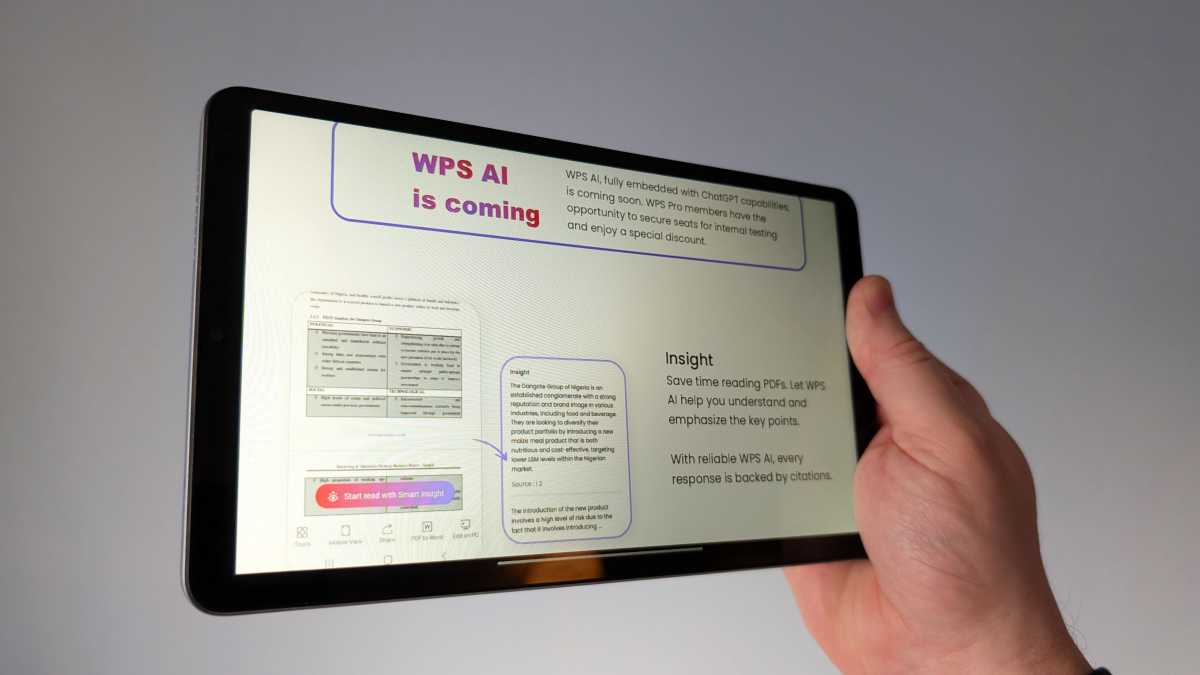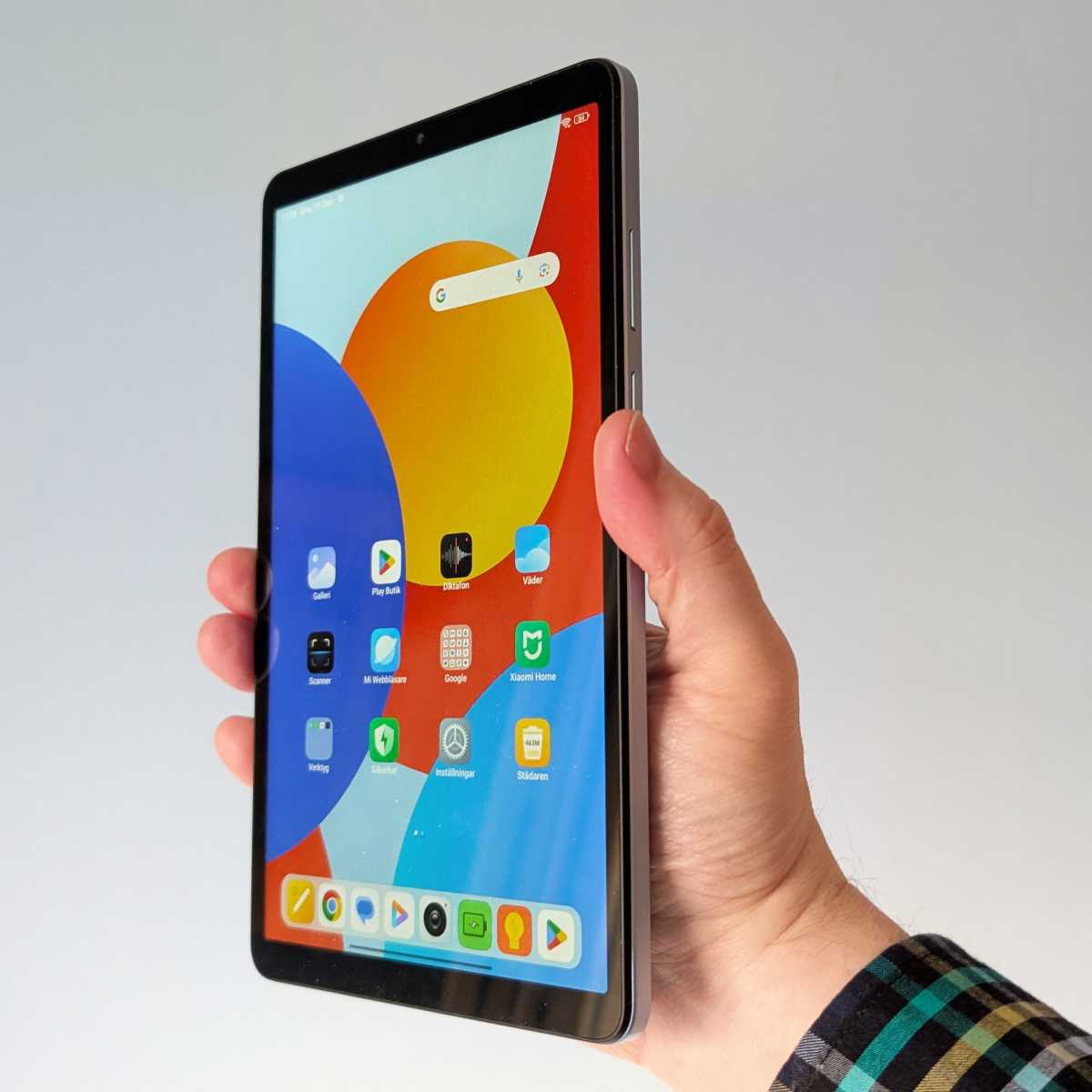Table of Contents
Expert assessment
Plus points
- Handy, compact size
- Good battery life
- Reliable selfie camera
- Low price
Disadvantages
- Faded screen with poor viewing angles
- Disappointing sound
- Questionable main camera
- Slow storage
Our verdict
If you think an iPad mini is too expensive an investment, this is a solid tablet in a similarly compact form factor. But the list of things we wish were better is long. Everything from a tired old chipset and slow storage to a low-resolution screen and poor audio. You can’t ask for much at this price, but it’s worth spending a little more to get a better tablet overall.
Price upon review
This value shows the geolocated price text for product undefined
Best price today
As the name suggests, Xiaomi’s Redmi Pad SE 8.7 is a compact tablet, with an 8.7-inch screen and a total widget of 12.5 cm. This was once a common size for a tablet, but like phones, the size has grown over the years and tablets of this size are now a rarity.
That in itself can be tempting, and the starting price of just £119 in the UK makes it a very attractive option. How does it perform in real world use? Read on to find out.
Design and construction
Unfortunately, you also get a lot of budget hardware with this cheap tablet. Firstly, it’s a device made entirely of plastic, and that shows in everything from the look to the grip feel. A gray-blue, ribbed back transitions to flat sides and then to (the only thing that’s not plastic) a Gorilla Glass 3 surface for the screen.
However, so much dust and dirt quickly accumulates that it still looks cheap. On the plus side, the tablet is IP53 certified, which means it can withstand water splashes without damage. This can be reassuring if you are outside with it and it starts to rain. No reason to panic.
Mattias Inge
Screen and speakers
The display is a simple IPS LCD panel with a resolution of 800 x 1340 pixels, weak colors and narrow viewing angles. However, the screen can reach brightness levels up to 600 nits, which means I can use it in daylight as long as there is no direct sunlight.
It has a refresh rate of up to 90 Hz. It makes for a bit more pleasant scrolling in documents, and sometimes on web pages, if the processor and graphics can generate them fast enough.
So is it a good tablet for streaming movies? Yes and no. The Wi-Fi 5 connection is fast enough, which is what most 4K TVs still run on, so that should be sufficient. But the screen isn’t the most attractive, and even the speakers aren’t the best quality, despite good stereo spread and Dolby Atmos support.
Specifications and performance
Unfortunately, they only do that some of the time. The Redmi Pad SE 8.7 is powered by the 2020 MediaTek Helio G85 chipset.
The age is palpable in some areas, such as older DDR4 RAM, limited camera support and only 4G instead of 5G as well. Elsewhere, the cameras in the tablet are very basic and the only connectivity you get is Wi-Fi 5, which isn’t a huge deal, but the performance just isn’t good.

Mattias Inge
With eight cores, including two ‘high-performance’ cores that weren’t at their peak even when the chipset first came out, it’s not fast. Mediocre RAM and slow eMMC storage contribute to slow app launches and lots of micro-pauses on the interface, such as when I change the screen orientation or type on the on-screen keyboard. This isn’t disqualifyingly bad, but it can be annoying.
The graphics of the Mali-G52 MC2 are not enough to seriously play games with 3D graphics, but the tablet can handle some simpler titles. For some reason, GFXBench and 3DMark don’t seem to want to download and install their benchmarks on the Redmi Pad SE, so I don’t have numbers on how slow it is, but it’s anything but fast. Also expect long loading times and the same risk of random bugs there as in the browser.
Battery life and charging
However, you do get a battery that will last from morning to night, if not well into the next day. It has a size of 6,650 mAh and with about the same power consumption when watching movies or browsing and using office apps, it can last a full working day.
Make sure to avoid power-hungry apps like Instagram and TikTok, otherwise battery life will be significantly reduced.
In terms of charging, the Redmi Pad SE 8.7 is limited to just 18W. There’s also only a 10W adapter in the box, which means it takes a long time to go from empty to full.

Mattias Inge
Cameras
If you want to hold video meetings on the tablet, the selfie camera works, but the microphone sound is poor, so you will want to connect a headset for that.
The selfie camera is actually more reliable than the rear camera, which has significant focusing issues and never gets pixel-level detail in video or photos.
Software and apps
The Redmi Pad SE 8.7 runs Android 14 with Xiaomi’s own HyperOS skin on top.
That means a whole bunch of extra apps, from the weather to its own security and system optimization app and a music player. You also get Netflix pre-installed.
It’s generally easy to navigate, once you get used to some of the interface’s quirks. But it is noticeable that it puts a lot of strain on the graphics card compared to an Android tablet with less bloatware.
It’s not clear whether Xiaomi has Android updates planned for this tablet, but don’t count on it. Let’s say it sticks around and gets security patches for maybe two or three years. Then maybe it’s time to buy a new one. Or buy a better tablet now. It’s up to you and your finances.
Price and availability
In the UK, the Redmi Pad SE 8.7 starts at £119 for 64GB storage or £139 for 128GB.
It’s available directly from Xiaomi or through Amazon, where discounts are often available.
Like all Xiaomi products, it’s not available in the US, although you might be able to import one.
At this price, it’s one of the cheapest budget tablets you can buy.
Should you buy the Xiaomi Redmi Pad SE 8.7?
The Redmi Pad SE 8.7 is relatively affordable, but there are too many compromises for most people to seriously consider buying it.
Instead, the Samsung Galaxy Tab A9 is a better all-rounder that is often available for a similar price.
This article originally appeared in our sister publication M3 and was translated and adapted from Swedish.

